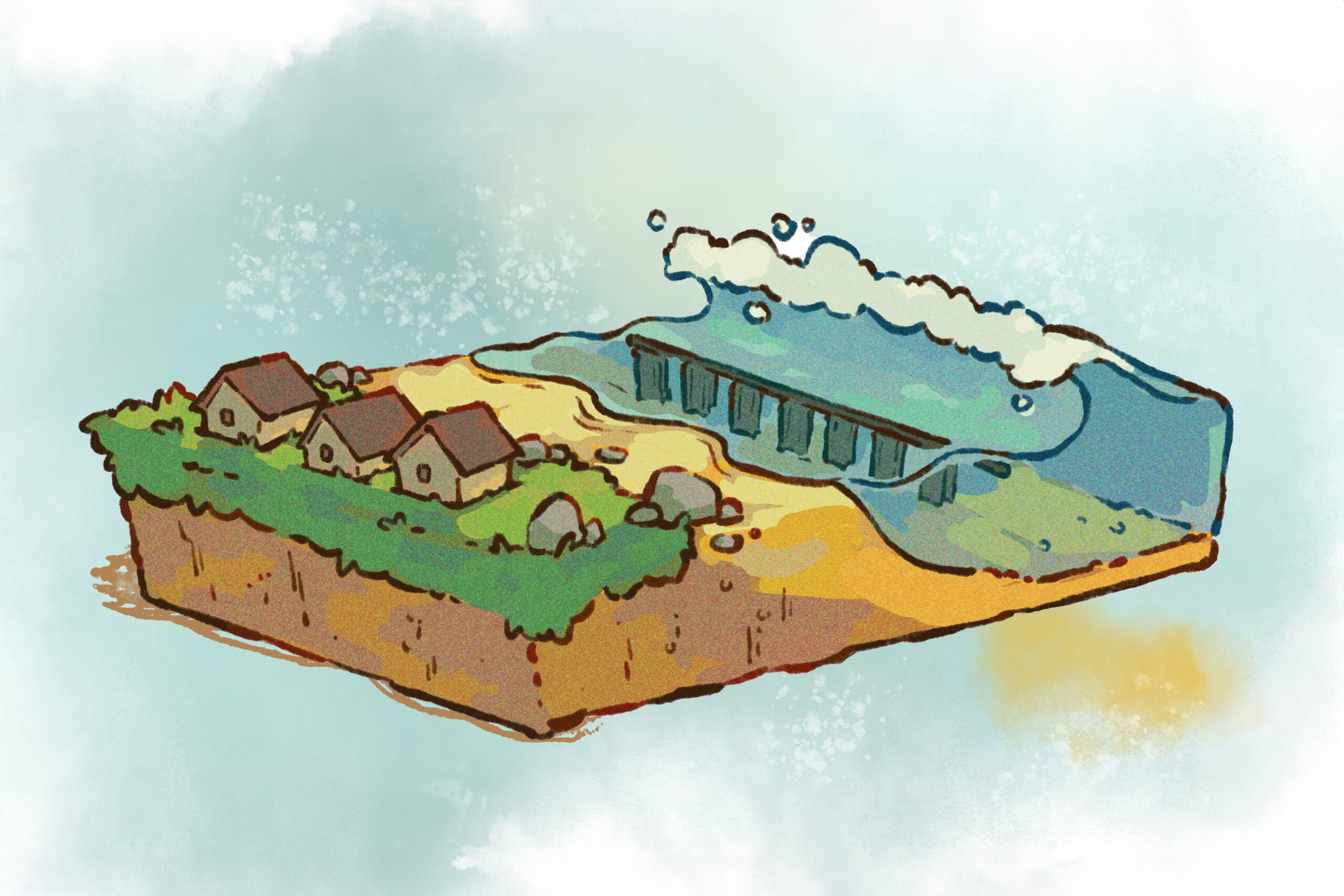The reefs encompassing tropical islands, with their stunning beauty and intricate formations, act as vital marine sanctuaries and natural barriers against turbulent seas. However, the escalating impact of climate change, leading to the deterioration and bleaching of coral reefs worldwide, coupled with the rising frequency of extreme weather occurrences, exposes coastal communities to heightened risks of recurrent flooding and erosion.
In an innovative approach, a team from MIT aims to bolster shorelines with engineered “architected” reefs – sustainable offshore structures designed to emulate the wave-mitigating functions of natural reefs while also fostering habitats for marine organisms.
The core of the team’s reef concept revolves around a cylindrical framework encircled by four rudder-like appendages. Through their research, the engineers discovered that when subjected to wave forces, this configuration effectively disperses the wave energy by breaking it into turbulent jets, significantly diminishing the total energy of the wave. The team’s calculations indicate that this novel design could achieve comparable wave energy reduction to existing artificial reefs while utilizing only a fraction of the material.
The proposed cylindrical structures are envisioned to be crafted from eco-friendly cement, molded into a pattern of “voxels” that can be autonomously assembled, featuring cavities for marine life exploration and settlement. By interconnecting these cylinders to create an extended, semi-permeable barrier along the coastline, engineers could potentially mitigate incoming wave energy by over 95%, based on preliminary tests conducted with scaled-down prototypes in laboratory settings.
Described as a lengthy wave-breaking system by Michael Triantafyllou, the Henry L. and Grace Doherty Professor in Ocean Science and Engineering at MIT, this innovative reef structure has the capacity to diminish towering 6-meter waves to less than a meter in height upon reaching the opposite side. This transformative effect could effectively combat erosion and flooding risks along vulnerable coastlines.
The detailed blueprint of the architected reef design is outlined in a study published in the open-access journal PNAS Nexus. The collaborative effort involved MIT researchers from various disciplines, including the MIT Sea Grant and the Center for Bits and Atoms, alongside external contributors from academic and industry partners.
The team’s journey towards developing this groundbreaking solution stemmed from a convergence of expertise in hydrodynamics and modular structure fabrication. Drawing inspiration from their work on fluid dynamics in oil and gas infrastructure, the researchers repurposed their findings to tackle wave dynamics in ocean environments, culminating in the innovative reef design.
The transition from plastic to cement in the fabrication process not only enhances sustainability but also introduces fish-friendly features, aligning with the team’s vision of creating a habitat-enhancing reef system. The strategic arrangement of “voxels” in the cement structures ensures both structural integrity and marine life accommodation, resembling interconnected egg cartons that facilitate fish movement without compromising wave dissipation capabilities.
As the team progresses towards real-world applications, the focus shifts to optimizing the scalability and transportability of the voxel-based reef structures for deployment in diverse offshore settings. By simulating real-world wave scenarios and conducting extensive testing, the researchers aim to validate the efficacy of their models and prepare for future implementation phases, potentially in collaboration with coastal communities in Massachusetts.
While acknowledging the substantial investment required for large-scale deployment, estimated at approximately $6 million per mile for a structure measuring a mile in length and 5 meters in height, the team emphasizes the long-term benefits in mitigating storm damage and safeguarding coastal regions against the escalating threats posed by climate change.
This transformative initiative, supported in part by the U.S. Defense Advanced Research Projects Agency, underscores the critical role of innovative engineering solutions in addressing the pressing challenges of coastal resilience in an era defined by environmental uncertainties.
